It’s rare that the snowmobile riding season begins for us in November, but in 2001 we had to make an exception. Ski-Doo had something new for us to ride, and promised us a U.S.-exclusive (Supertrax was allowed to break the news in Canada) for our March 2002 issue — which mailed the first week of January, 2002. We boarded a plane for Utah, and ended up seeing the future unveiled in the Ski-Doo REV chassis.
The REV was the first rider-forward design, and on one level or another it became the basis for all chassis designs that followed from all snowmobile brands. Admittedly it felt odd at first, and some on our staff didn’t become truly at home on the design until the updated REV-XP platform was later unveiled with more available forward foot room. But still, the place that the original 2003 REV design holds in snowmobiling history cannot be overstated.
Let’s look back on that unveiling – now nearly 20 years in the rear view mirror – with the first impressions of this truly revolutionary design, as printed in Snow Goer’s March 2002 issue (below). If you want a copy of this keepsake issue, we’ve got 8 left in our archives to sell on the www.SnowGoerStore.com website.
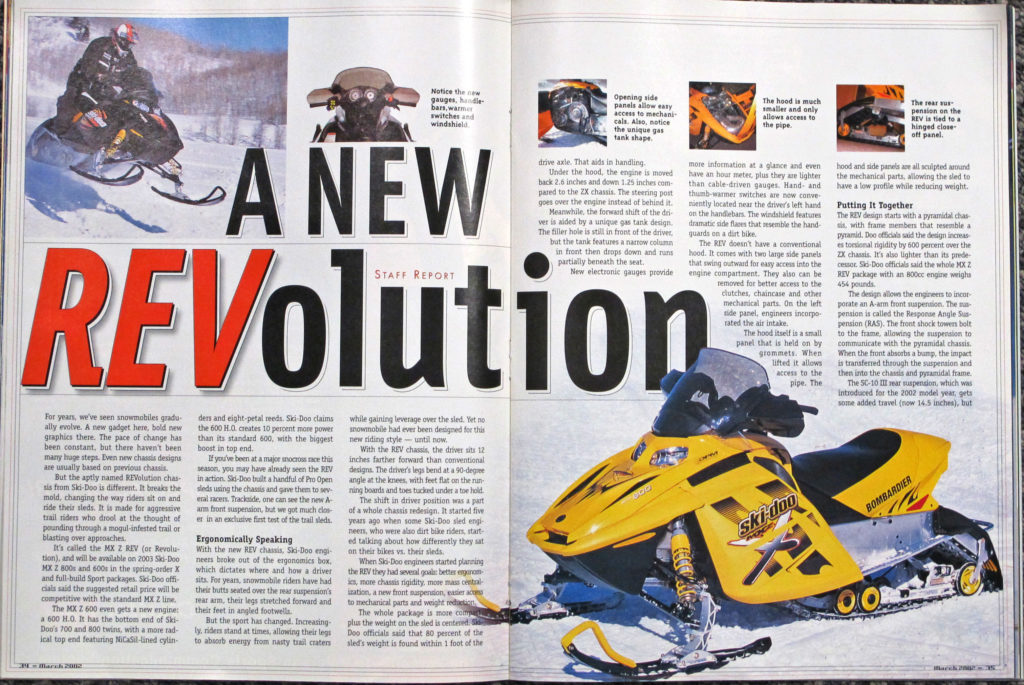
A New REVolution
As printed in the March 2002 issue of Snow Goer.
For years, we’ve seen snowmobiles gradually evolve. A new gadget here, bold new graphics there. The pace of change has been constant, but there haven’t been many huge steps. Even new chassis designs are usually based on previous chassis.
But the aptly named REVolution chassis from Ski-Doo is different. It breaks the mold, changing the way riders sit on and ride their sleds: It is made for aggressive trail riders who drool at the thought of pounding through a mogul-infested trail or blasting over approaches.
It’s called the MX Z REV (or Revolu tion), and will be available on 2003 Ski-Doo MX Z 800s and 600s in the spring order X and full-build Sport packages. Ski-Doo officials said the suggested retail price will be competitive with the standard MX Z line.
The MX Z 600 even gets a new engine: a 600 H.0. It has the bottom end of Ski Doo’s 700 and 800 twins, with a more radical top end featuring NiCaSil-lined cylinders and eight-petal reeds. Ski-Doo claims the 600 H.O. creates 10 percent more power than its standard 600, with the biggest boost in top end.
If you’ve been at a major snocross race this season, you may have already seen the REV in action. Ski-Doo built a handful of Pro Open sleds using the chassis and gave them to sev eral racers. Trackside, one can see the new A arm front suspension, but we got much clos er in an exclusive first test of the trail sleds.
Ergonomically Speaking
With the new REV chassis, Ski-Doo engineers broke out of the ergonomics box, which dictates where and how a driver sits. For years, snowmobile riders have had their butts seated over the rear suspension’s rear arm, their legs stretched forward and their feet in angled footwells.
But the sport has changed. Increasing ly, riders stand at times, allowing their legs to absorb energy from nasty trail craters while gaining leverage over the sled. Yet no snowmobile had ever been designed for this new riding style – until now.
With the REV chassis, the driver sits 12 inches farther forward than conventional designs. The driver’s legs bend at a 90-degree angle at the knees, with feet flat on the running boards and toes tucked under a toe hold.
The shift in driver position was a part of a whole chassis redesign. It started five years ago when some Ski-Doo sled engineers, who were also dirt bike riders, started talking about how differently they sat on their bikes vs. their sleds.
When Ski-Doo engineers started planning the REV they had several goals: better ergonom ics, more chassis rigidity, more mass centralization, a new front suspension, easier to mechanical parts and weight reduction.
The whole package is more compact plus the weight on the sled is centered. Ski-Doo officials said that 80 percent of the sled’s weight is found within 1 foot of the drive axle. That aids in handling.
Under the hood, the engine is moved back 2.6 inches and down 1.25 inches com pared to the ZX chassis. The steering post goes over the engine instead of behind it.
Meanwhile, the forward shift of the driver is aided by a unique gas tank design. The filler hole is still in front of the driver, but the tank features a narrow column in front then drops down and runs partially beneath the seat.
New electronic gauges provide more information at a glance and even have an hour meter, plus they are lighter than cable-driven gauges. Hand- and thumb-warmer switches are now conveniently located near the driver’s left hand on the handlebars. The windshield features dramatic side flares that resemble the handguards on a dirt bike.
The REV doesn’t have a conventional hood. It comes with two large side panels that swing outward for easy access into the engine compartment. They also can be removed for better access to the clutches, chaincase and other mechanical parts. On the left side panel, engineers incorpo rated the air intake.
The hood itself is a small panel that is held on by grommets. When lifted it allows access to the pipe. The hood and side panels are all sculpted around the mechanical parts, allowing the sled to have a low profile while reducing weight.
Putting It Together
The REV design starts with a pyramidal chassis, with frame members that resemble a pyramid. Doo officials said the design increases torsional rigidity by 600 percent over the ZX chassis. It’s also lighter than its predecessor. Ski-Doo officials said the whole MX Z REV package with an 800cc engine weighs 454 pounds.
The design allows the engineers to incorporate an A-arm front suspension. The suspension is called the Response Angle Suspension (RAS). The front shock towers bolt to the frame, allowing the suspension to communicate with the pyramidal chassis. When the front absorbs a bump, the impact is transferred through the suspension and then into the chassis and pyramidal frame.
The SC-10 III rear suspension, which was introduced for the 2002 model year, gets some added travel (now 14.5 inches), but the geometry is mostly unchanged. Spring and shock rates at the rear arm have been lightened because of the shift in driver position.
That suspension, however, connects to the chassis differently. The tunnel ends short of its normal position, and a pivoting close-off panel connects directly to the rear wheels with an aluminum bracket. As the suspension drops out, this close-off area pivots down.
Another unique feature is the “1+1” seating configuration. It involves an optional clip on passenger seat that attaches to the back of the standard seat. covering the oversized glove box.
On The Trail
Getting accustomed to the REV took a little bit of time. But after that initial feeling-out period, it was comfortable.
With the forward seating position and legs at a 90-degree angle, standing up when encoun tering a bump was easy. Riders will use muscles differently on the REV than on other sleds.
It also took some time adjusting to lean ing when barreling around a comer. On the MX Z REV with its centralized mass, we quickly learned that we had to lean forward and out instead of leaning back and out. It was a strange feeling at first but felt like second nature soon after.
When we took the MX Z REV for a spin, engineers were still dialing in the shocks, but the whole suspension system (front and back) soaked up the bumps well. Again, with the forward riding position, the front arm on the rear suspension does most of the work.
The A-arm front suspension softened each blow. When we encountered a bump with the front, we could feel it absorb the energy backward through the chassis.
Parting Shots
Our first impressions of the REV chassis sleds left us begging for more, and we’ll get more seat time at Rode Reports in March. After a day of riding, our legs were more tired than usual due to the new riding position, but our back muscles were loose. Plus, we had a ton of fun the new chassis layout, light weight and radical look of the machine made us want to juice the throttle over bumps and pick up the front end.
We expect the REV sleds to carve their own niche. Aggressive riders will likely love the new layout, but high-mile cruisers may want to stick to the more relaxed position of a conventional snowmobile layout.

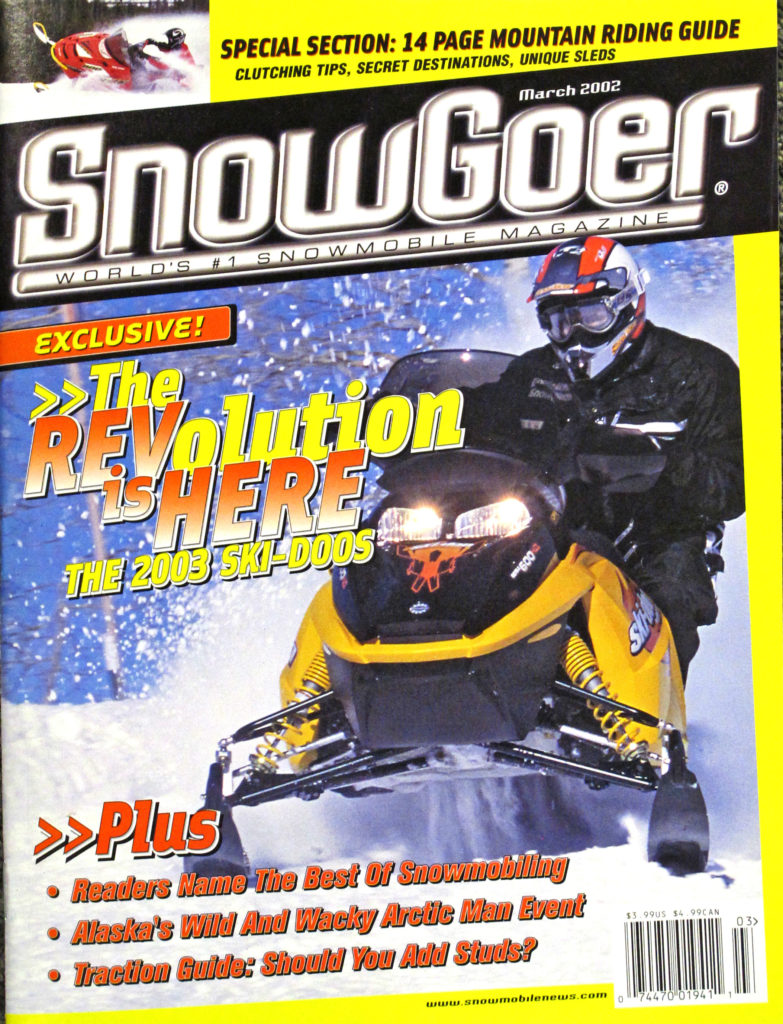
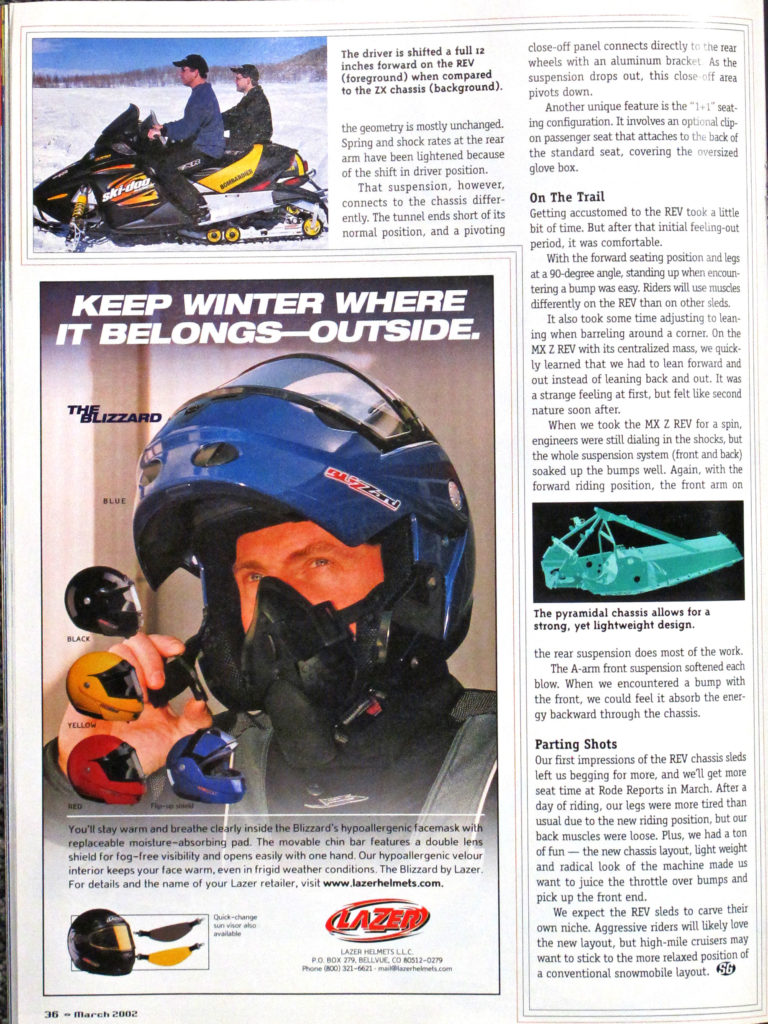
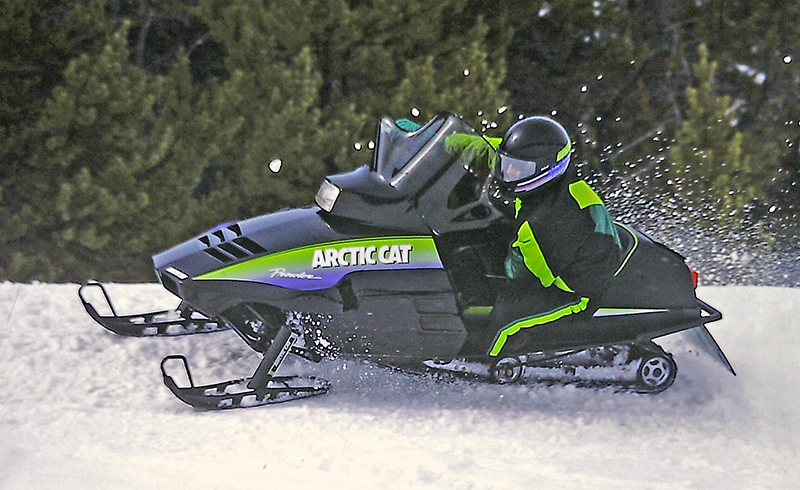
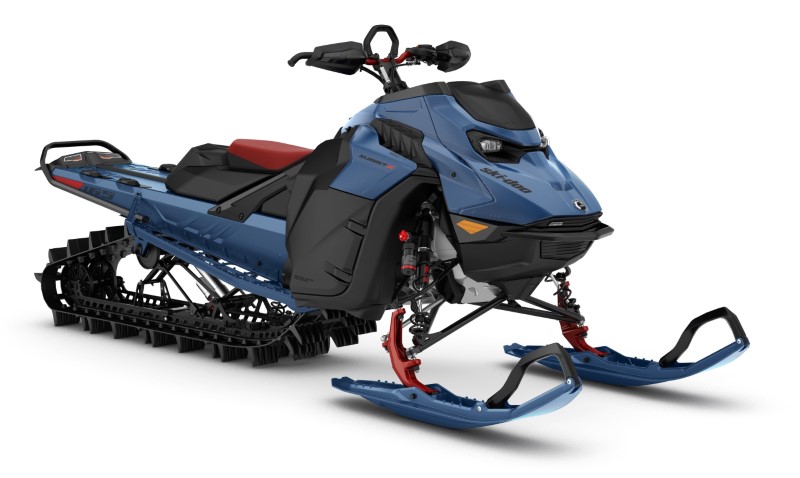
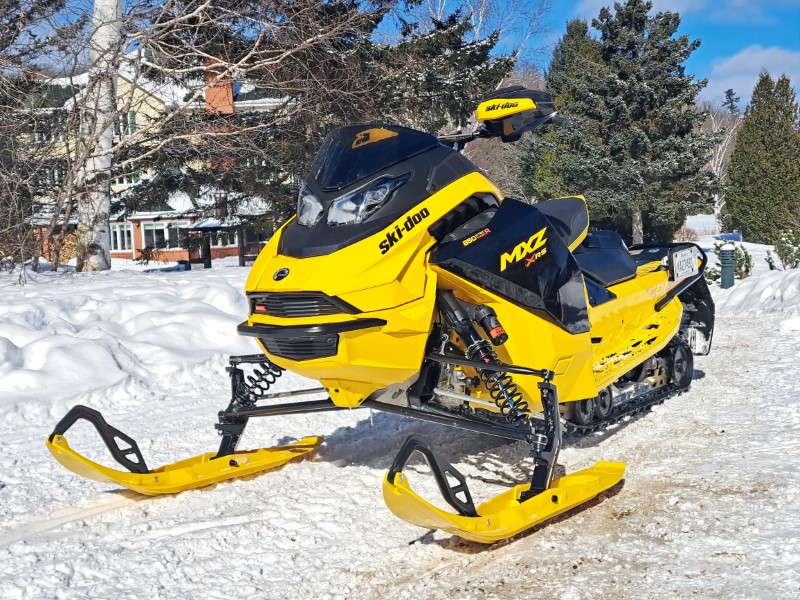
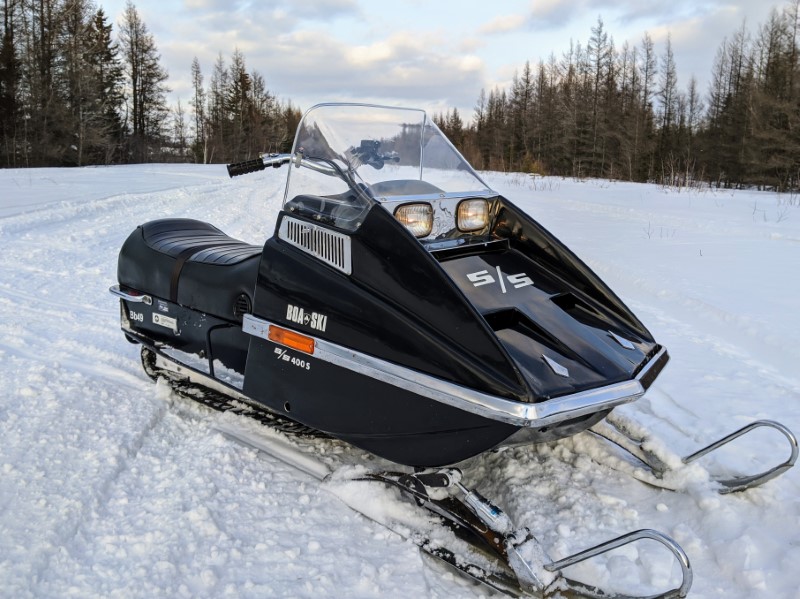

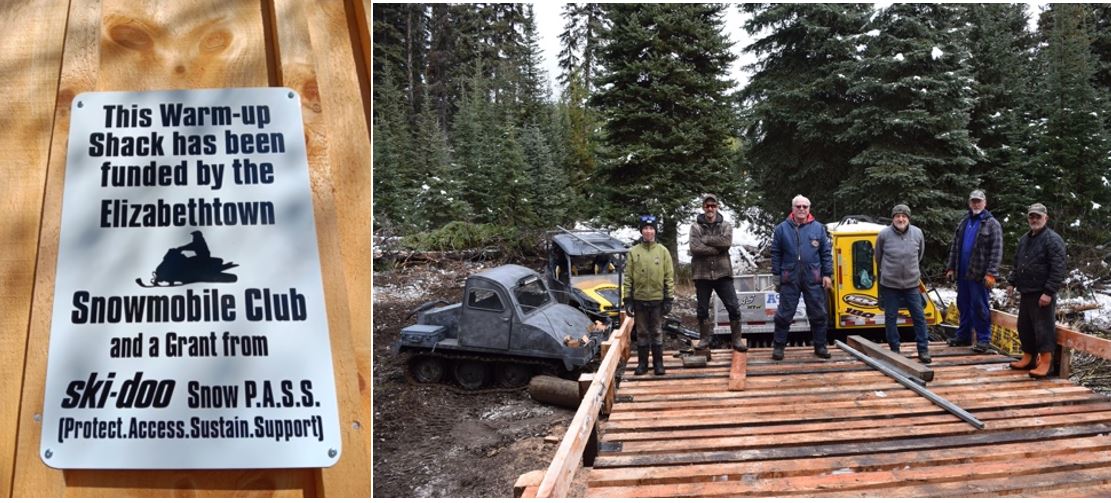
First to be marketed by a major, but hardly the first.